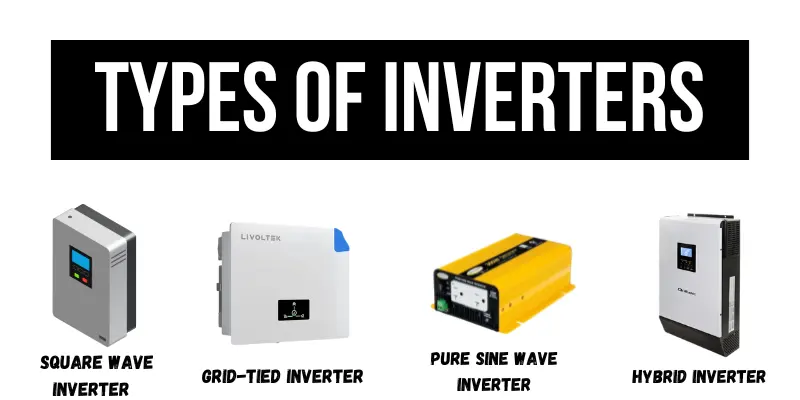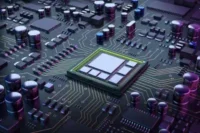Understanding Different Types of Inverters in 2025
Published: 9 Aug 2025
Power outages can disrupt your life for a while, unless you have a backup power source, such as an inverter. Inverters keep your fans, lights, and devices running even when there is no power. However, not all inverters have been the same. Some are simple and inexpensive, while others are advanced and effective. If you are considering a renewable energy setup, pairing the right inverter with the right type of solar panel can significantly improve efficiency.
In this article, we’ll explain what an inverter is, the various types of inverters, and how to select the best one for your home or office. We’ll also point out some common mistakes to avoid when purchasing one. Let’s get started.
What Is an Inverter?
An inverter is a device that converts direct current (DC) into alternating current (AC). Most household appliances, such as televisions, fans, and refrigerators, run on AC power. However, batteries and solar panels store energy in DC form. That’s where an inverter comes in. It converts the stored DC into usable AC, allowing your devices to run smoothly.

Types of Inverters
Different types of inverters are available to meet a variety of power requirements. Let’s break down each type so you can easily determine which is best for you:
1. Square Wave Inverter
This is the most basic and inexpensive type of inverter. It produces a square-shaped current that is not smooth. It can power simple devices such as lights and fans. However, it is not suitable for sensitive electronics such as computers and televisions.
2. Modified Sine Wave Inverter
This inverter produces a current that is superior to a square wave but not perfect. It supports a wider range of devices, including mixers, bulbs, and small appliances. However, some electronics may generate noise or overheat. It’s an excellent choice for basic home use on a budget.
3. Pure Sine Wave Inverter
This type produces a smooth and clean wave, similar to power from the grid. It is safe for all devices, including refrigerators, televisions, laptop computers, and medical equipment. It makes appliances more efficient and quieter. Although more expensive, it provides the best performance.
4. Grid-Tied Inverter
A grid-tied inverter connects to the primary power grid. It is primarily used in solar systems to feed excess electricity back into the grid. This helps to reduce your electricity bill. It does not work during power interruptions unless you have a battery backup.
5. Off-Grid Inverter
This inverter operates independently of the power grid. It draws power from solar panels or batteries and delivers it directly to your home. It is ideal for remote areas and full backup systems. You achieve complete energy independence, but the initial costs can be high.
6. Hybrid Inverter
A hybrid inverter is innovative and adaptable. It is compatible with solar panels, batteries, and the grid. It automatically regulates power flow and saves energy for later use. It’s ideal for saving money while always having backup power.
How to Choose the Right Inverter
Choosing the right inverter depends on your needs. Here are some tips:
- Check Your Power Needs: Create a list of all the devices you want to operate during a power outage.
- Select the Right Type: For basic applications, a modified sine wave inverter is the most suitable option. However, for complete home support, opt for a pure sine wave or hybrid inverter.
- Battery Compatibility: Ensure the inverter is compatible with the type of battery you intend to use.
- Consider safety features, including overload protection, automatic shutdown, and battery health monitoring.
- Go for Trusted Brands: Choose a brand that gives a good warranty and customer support.
Common Mistakes to Avoid When Buying an Inverter
Avoid these common errors:
- Buying Without Calculating Load: Always check how much power your devices need.
- Choosing the Cheapest Option: Cheap inverters can harm your electronics.
- Ignoring Battery Type: Some inverters are only compatible with specific types of batteries.
- Not Checking Warranty or Support: Always purchase from a company that provides service and support.
- Skipping User Reviews: Real customer feedback helps you avoid bad products.
Conclusion
The right inverter ensures your home or office keeps running during power outages. Whether you choose a budget-friendly modified sine wave or a high-performance pure sine wave, always match your inverter with your needs.
If you plan to use it with solar energy, make sure to check our Types of Solar Panels guide to pick the perfect match.
Frequently Asked Questions [ FAQs ]
An inverter is used to power your lights, fans, and other devices during a power outage. It takes energy from a battery and turns it into usable electricity.
A pure sine wave inverter is ideal for homes. It works with all devices and is suitable for long-term use.
Here are the different types of inverters:
- Square Wave Inverter
- Modified Sine Wave Inverter
- Pure Sine Wave Inverter
- Grid-Tied Inverter
- Off-Grid Inverter
- Hybrid Inverter
Let’s make things easy. Exide Home inverters are an excellent choice for Indian homes that require a dependable, long-lasting, and intelligent power backup solution. In this guide, we’ll explain what to look for and why Exide might be the best option for your home.
An inverter converts direct current (DC) from a battery or solar panel to alternating current (AC) for use by home appliances. It allows lights, fans, and other devices to function during power outages. Inverters are essential for providing backup power in homes, offices, and off-grid environments.

- Be Respectful
- Stay Relevant
- Stay Positive
- True Feedback
- Encourage Discussion
- Avoid Spamming
- No Fake News
- Don't Copy-Paste
- No Personal Attacks

- Be Respectful
- Stay Relevant
- Stay Positive
- True Feedback
- Encourage Discussion
- Avoid Spamming
- No Fake News
- Don't Copy-Paste
- No Personal Attacks





